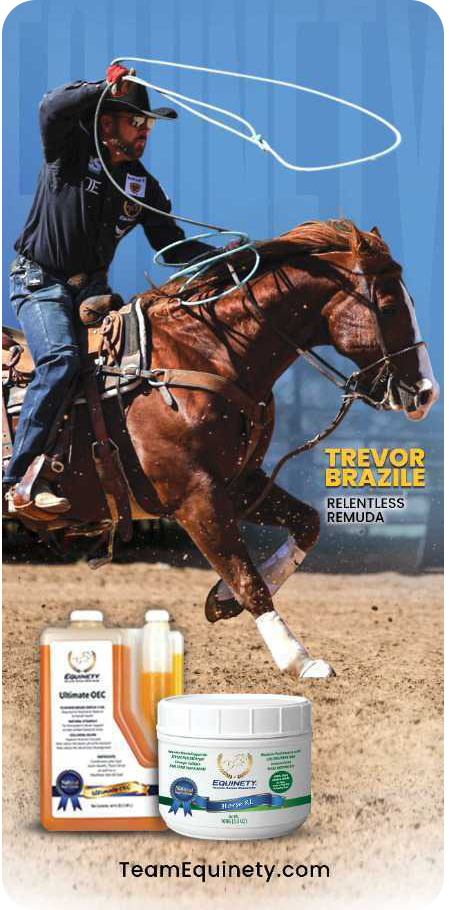A horse pelvis is a complex structure that connects the hindquarters to the spine. It comprises three bones: the Ilium, the Pubis, and the Ischium. The Pelvis of the horse is designed to support the internal organs, and it has a significant role in the movement of the equine.
The horse pelvis performs a variety of functions that include:
- Movement:
The Pelvis helps horses in mobility by allowing the coordinated movement of hind limbs, which is essential for work and athletic activities.
- Weight Support:
The Pelvis supports the weight of the horse and rider, and it also distributes evenly to the legs.
- Protection of Internal Organs:
The Pelvis is also supposed to protect vital internal organs, such as the digestive and reproductive systems, for the smooth functioning of the equine body.
Horse Hip Injury and Hip Disorders:
Horse hip injury and hip disorders are responsible for the misalignment of the Pelvis. The hip and Pelvis of a horse play an essential role in the movement, and any injury or illness in such areas can lead to pelvis-related issues.
Symptoms of misaligned Pelvis vary according to the severity of the condition, but the following are a few common symptoms:
1. Lameness:
A horse that is facing any kind of misaligned Pelvis will experience lameness. It is also reluctant to bear weight on one or both hind limbs. It creates a painful situation for the horse during movement.
2. Performance Issues:
If you are experiencing a sudden decrease in the performance of your horse, like a decrease in speed or agility, then it may be due to Pelvis. A horse suffering from a misaligned Pelvis will not be able to perform its routine tasks like an average horse.
3. Pain and Discomfort:
A horse with a misaligned Pelvis will show signs of pain and discomfort in the hip region when palpated. It will also feel difficulty in warming up and show reluctance to move freely.
4. Behavioral Changes:
Behavioral changes in the equine can also cause a misaligned pelvis, which may become irritated or aggressive because of discomfort. If you are horse is showing any sign of behavioral changes, then you should be worried about any pelvis disorder.
5. Difficulty in Turning:
Difficulty turning or backing up is another visible symptom of a misaligned pelvis because the hip region feels pain during the sharp turning of the horse. The altered posture that includes a raised or dropped hip due to the Pelvis also makes it difficult for the horse to turn quickly.
6. Stiffness:
A horse with a misaligned pelvis experiences reduced flexibility in hind limbs, showing reluctance in lateral movements.
Causes of Misaligned Horse Pelvis:
Horse pelvis can be misaligned due to different factors, so if we talk about common causes, they are following.
1. Injury or Trauma:
Injury or trauma can lead to a horse’s Pelvis being out of alignment, such as a kick, traumatic fall, accident, or collision. If the hip region of the horse is affected, then it can lead to misalignment of the Pelvis.
2. Excessive Exercise:
Horses are vital as they are trained to do complex tasks. But at the same time, excessive workload and exercise are also quite dangerous for them. Overexertion or excessive exercise can contribute to misalignment of the Pelvis over time.
3. Muscular Imbalance:
Muscular imbalances affect the health of the equine badly, and these imbalances often occur due to one-sided training, which can result in pelvis misalignment. Poor saddle fit causes discomfort and disrupts the alignment of the Pelvis.
4. Joint Diseases:
Any degenerative joint disease can cause misalignment in the Pelvis of the horse. Osteoarthritis is one of the common joint diseases that can lead to pelvis disorder. It causes inflammation, cartilage damage, and bone changes, so monitor the collective health of your equine closely.
5. Hoof Problems:
The hoof of a horse works as the foundation of its entire body, and when a horse experiences lameness, improper trimming, improper trimming, or uneven wear, it affects the hooves badly. These hoof problems place strain on muscles that are connected to support the Pelvis and result in its misalignment.
6. Unfitted Tack:
If the saddle, girth, or other equipment is not adjusted correctly on the horse’s body, they create pressure on the shoulders and back of a horse. Over time, these issues become severe and result in a misaligned pelvis.
Treatment of a misaligned pelvis of the horse is a combination of different factors, so for effective treatment, you can consider the following points.
- Consult with a Veterinarian:
Misalignment of the Pelvis is quite a painful condition for horses. If it is not treated at early stages, it can lead to severe consequences. If your horse is experiencing such a condition, then you must consult with a qualified veterinarian. With the help of physical examination and imaging techniques like X-rays, the Vet can assess the extent of misalignment and the device’s best remedies.
- Pain Management:
Pain management through medication is necessary to keep the horse comfortable, which will help in the proper treatment of the Pelvis.
- Physical Therapy:
Physical therapy, like a tailored exercise program, can help strengthen the pelvic muscles and improve balance. Electric stimulation and ultrasound also aid in muscle recovery of the hip region.
- Rest:
A horse that is suffering from pelvic disorder will feel pain and discomfort, especially at the time of movement. It is necessary to limit its movement as it will help the Pelvis to heal. Excessive rest is also not good for pelvis health, so a gradual reintroduction to training and work is also beneficial for overcoming pelvis issues.
Preventing Horse Pelvis Misalignment:
Prevention is always better than treatment, so with the help of a few precautionary measures, you can reduce the chances of pelvis misalignment in your equine.
1. Maintain Healthy Weight:
Overweight horses are more vulnerable to pelvis-related issues. So it is better to maintain the healthy weight of your equine according to age.
2. Regular Trimming of Hooves:
A strong hoof provides a solid basis to the body of a horse, so with the help of regular trimming of hooves, your equine will pose vital physical and Pelvis health.
3. Proper Fitted Tack:
Unfitted tack is one of the leading causes of pelvis misalignment over time, so always ensure that the tack of your horse fits appropriately.
4. Balanced Training:
Ensure a balanced training program for your equine that develops both sides of the horse equally so that the Pelvis is aligned correctly. Adequate warm-up and cool-down time before and after training can prevent muscle strain and ensure the Pelvis’s health.
5. Regular Veterinarian Checkups:
Regular veterinarian checkups will help you catch any issues early and provide quick treatment. The Vet will also ensure the saddle fits correctly so as not to create pressure points that can contribute to pelvis disorders over time.
6. Nutrition and Diet with Natural Supplements:
Provide a well-balanced diet to support the muscle and overall health of your equine. The inclusion of natural supplements like Equinety Horse XL and Equinety Ultimate OEC in the diet of equine will ensure joint solid health. These products are comprised of essential vitamins, minerals, amino acids, and colloidal silver that are necessary for the collective health of horses.
Expert’s Equine Guides for You:
- Pregnant Mare Supplements and Nutation Care
- Laminitis In Horse: Causes, Symptoms, Treatment
- How to Increase Horse Hoof Growth
- Best Joint Support Supplements (2023)
- Muscle Recovery Natural Supplements for Horses
- Best Gut Health & Digestive Supplement for Horses
- Horse Weight Loss Symptoms and Causes
- Digestive Supplements for Equine (2023)
- How to Boost Horse Immune System Naturally







